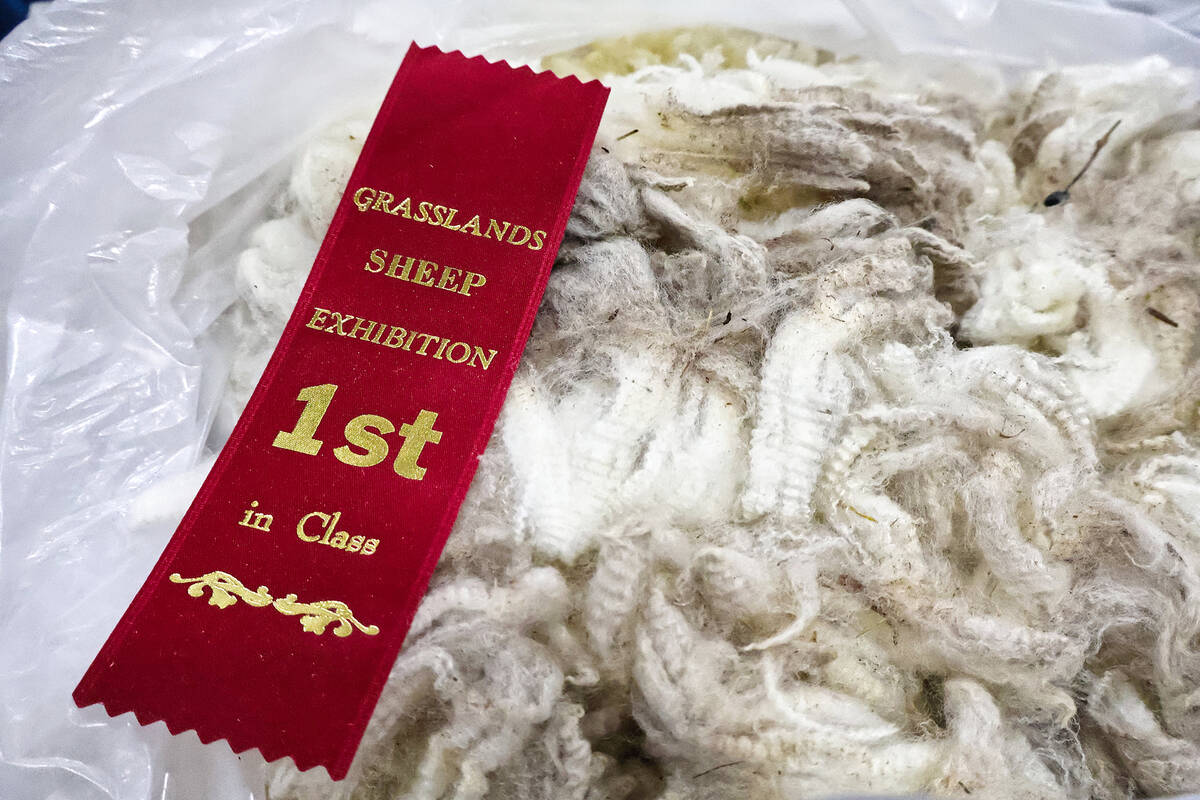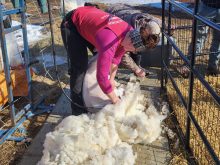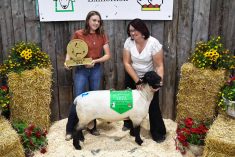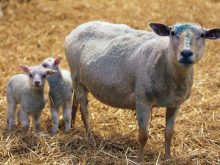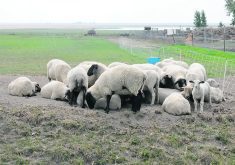More than 200 animals recently crowded into the Humboldt Uniplex in Humboldt, Sask., but some businesses and industry insiders were there with one purpose in mind: promoting Canadian and Saskatchewan-grown wool products.
When Matthew Rowe, chief executive officer of the Canadian Wool Council, travelled to Toronto earlier this year, he brought along a videographer.
Under the patronage of King Charles III, the council is promoting its Campaign for Wool and its mission to raise awareness about wool products made by Canadian producers.
Read Also

Global meat packer prepares for cattle shortage
Brazilian meat packer JBS is preparing for a likely shift in the country’s cattle cycle that could lead to reduced availability of animals for slaughter next year.
Part of the campaign has included shooting a series of videos about wool production in Canada called The Fabric of Canada.
One of the next videos will be about products made in Saskatchewan with plenty of footage taken at the Grasslands Sheep Exhibition in Humboldt.
Rowe said he saw an “incredible array of prime specimens” of both animals and wool-based businesses.
“Some amazing, amazing businesses are transforming Saskatchewan wool into high value-added products. You could really get a feeling for the provincial industry here,” he said.
Humans have been using wool products for 10,000 years, he said, but our push to synthetics has not been good for us, the environment or the wool market.
“We’re now realizing all the problems that come with being reliant on fibre that’s made from petroleum, that sheds microplastic, that has all kinds of problematic elements,” he said.
People are waking up to the plasticification of the world they live in, said Rowe, and are now looking for natural alternatives.
However, expanding the Saskatchewan wool industry is going to take some work because there is a significant lack of local mills and product acceptance in the province.
Brooke Aitken raises sheep outside of Eyebrow, Sask., and helped organize the Grasslands Fleece Competition at the Humboldt exhibition.
Ten sheep producers showed 34 entries for the competition, and Aitken said she was excited to see different fleeces from different breeds of sheep.
Part of promoting the event has been seeing the good in every type of wool.
“There’s lots of good uses for what are traditionally thought of as meat breeds, like a Cheviot or a Suffolk,” she said.
“There’s still good uses for that wool. It’s not garbage just because it’s not a fine wool.”
Unfortunately, Canada has a well-deserved reputation for producing dirty wool, said Aitken.
There isn’t a lot of value in raw wool, and yet sheep have to be shorn for their own health. If producers aren’t raising wool to be sold, typical farming practices don’t align with the quality of the end product in mind, said Aitken.
“That is a challenge for marketing it, because, of course, then that means it requires more processing. So anytime you add more processing, you add more cost.”
Numerous businesses were in Humboldt to change this perception, which goes beyond wool for crafting and warm clothing production.
While there were plenty of yarn and textile sellers, including Aitken, Rowe said there are many other uses for wool that people don’t realize.
Count Your Sheep, a Hanley, Sask., based business, specializes in luxury mattress covers, duvets and pillows made out of wool. According to its website, the wool comes from its own flock, as well as local sheep farmers.
Using wool-based bedding has been proven to improve the quality of sleep due to its temperature and moisture regulating properties, Rowe said, and wool for use in upholstery has also increased because it is anti-microbial and durable but also biodegradable.
“Particularly for strong wool, which is the sort of wool we produce here in Canada, generally speaking, when you have wool in your home — wool carpets, wool upholstery — it literally makes for healthier living spaces.”
Helen Verstegen said it was getting to the point where she had more wool in the barns than sheep. Her research led her to create wool pellets for her own garden, but then the business took off as more people wanted to give them a try.
Thus, Canadian Wool Pellets was born.
Based in Caron, Sask., the pellets provide effective water retention and natural fertilization and is now being sold in stores in Saskatchewan.
“What an amazing way to use wool and not have it go to your landfills or to your back 40,” said Verstegen.
“That’s our biggest thing with Campaign for Wool, like just for the many uses that we can do with it.”
Just like the local food movement is picking up speed, the same can also be said for the local textile market, said Aitken.
“There are people who want that connection. They don’t want to buy Merino from New Zealand. They want to buy something from their local area. That’s becoming, especially the millennial generation, is more interested in that than some of the other generations.”
Rowe himself was wearing a Harris Tweed blazer, a 100 per cent wool product made in Scotland.
He said there’s no reason why there shouldn’t be a Canadian alternative, given how much wool is already produced here.

